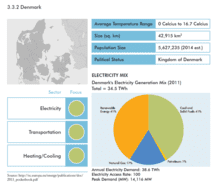Publications investigating a 100 percent supply of renewable energy continue to pour in. Last week, the World Future Council produced a Policy Handbook that is unique in two ways. First, it covers all energy, not just electricity. And second, it does so with a focus on cities and communities in various parts of the world.

Entitled “How to achieve 100 percent sign renewable energy” (PDF), the study was co-authored by policy analyst Toby Couture of E3 Analytics and Anna Leidreiter of the World Future Council (WFC). Couture is an expert on international energy policy, and the study is based on the work that the WFC has done internationally over the past two years. So the first refreshing thing about this study is the scope. We are not just talking about Europe, and not just about regions that have already gone 100 percent in some way.
For instance, critical visitors to Germany point out that the only regions that have now gone 100 percent are rural communities that have done so mainly with electricity, such as Feldheim, and only as a net calculation; they still rely on the grid at times, but they simply produce more renewable power over the year than they consume. In other cases, such as Jühnde, communities also produce their own renewable heat – but is that something only a farming community can do? Will it work with a city as well? And if you are not connected to the larger world, merely going 100 percent net renewable is not an option – on an island, renewables have to ensure supply security as well.

The German island of Pellworm is currently investigating whether it decreased its reliance on the German grid and get all of its power and heat from the island. But fortunately, the WFC’s study goes beyond Germany. Of the eight locations investigated, two of them are in Germany (the city of Frankfurt and the region of Rhein-Hunsrück), while another two are in the developing world: Cap Verde and Tuvalu. San Francisco represents the US, while Fukushima Prefecture is a Japanese case study.
The two remaining examples – Denmark and the Spanish island of El Hierro – are especially interesting cases. While Germany continues to be spoken of as a courageous (or perhaps misled, depending on your stance) country forging into unknown territory, the Danes actually have a much more ambitious targetof 100 percent renewable energy by 2050; the German goal of 60 percent renewable energy (and 80 percent renewable power) pales in comparison. And who knew that Cape Verde also has a 100 percent target for renewable electricity?
Likewise, El Hierro is now home to a unique project that combines renewable power (primarily wind) with pumped storage to take advantage of the island’s particular potential. Not everyone has a dormant volcanic crater to pump water into. But even then, political will is required.

And that’s where this study is most interesting. By collecting case studies, the authors show that there is no single recipe; each location has particular resources and challenges. Furthermore, by taking so many examples below the national level, the authors underscore the importance of local action. National policies are crucial, but these policies will largely be implemented locally.
The solutions are surprisingly simple. For instance, how can an urban area like Frankfurt possibly get 100 percent of its energy from renewables given its population density? That’s obvious:
“City representatives and local experts determined that in order to supply 100 % of its energy needs from renewable energy sources, Frankfurt would need to rely on neighbouring communities and the surrounding rural area… Currently, the Master Plan envisions that approximately 25 % of the target will be met with supply from within the City, 25 % from outside the City, and total energy consumption will be decreased by 50 %.”
In passing, the study also has text boxes on Sydney, Australia; rural Bangladesh; and Costa Rica. And I haven’t even mentioned the study’s policy recommendations and key findings. One should be added before I close: 100 percent renewables is not just for the rich. But read the study for yourself – here’s the link again to the PDF.
Source: Renewables International. Reproduced with permission.










